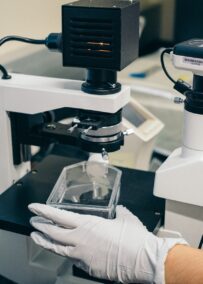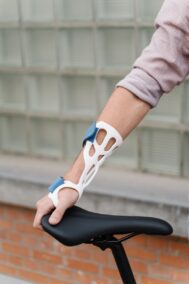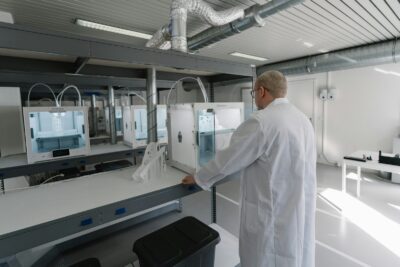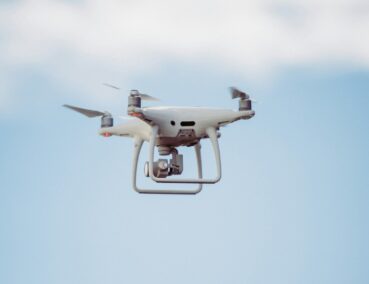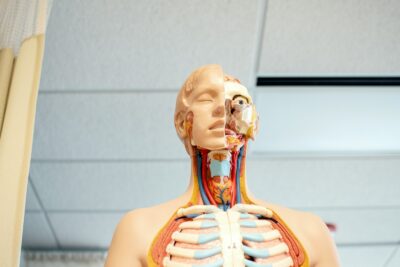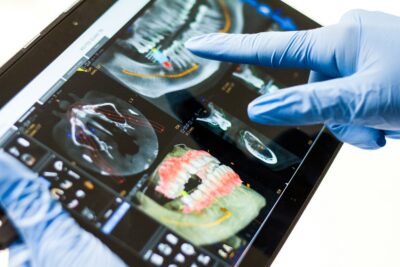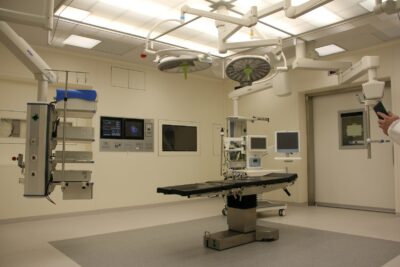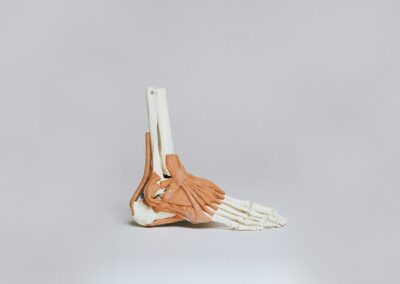Revolutionizing Healthcare: Precision 3D Printing in Medical Implants and Prosthetics
The Impact of 3D Printing on Medical Implants
By utilizing precision 3D printing, medical professionals can now create implants that are tailored to the exact anatomical specifications of individual patients, leading to better outcomes and reduced recovery times. Advancements in 3D printing technology have significantly transformed the field of medical implants and prosthetics, providing unprecedented precision and customization. This innovation is particularly noteworthy in regions such as Saudi Arabia and the UAE, where healthcare systems are rapidly adopting new technologies to enhance patient care.
In Riyadh and Dubai, hospitals and medical centers are leveraging 3D printing to fabricate complex implants that fit perfectly, reducing the risk of complications and improving the overall success rates of surgical procedures. This technology allows for the creation of highly detailed models of bones, joints, and other structures, enabling surgeons to plan and execute procedures with greater accuracy. Moreover, the ability to produce implants on-demand significantly decreases the waiting time for patients, providing timely interventions that are crucial for recovery.
The benefits of 3D printing in medical implants extend beyond precision and customization. This technology also allows for the use of biocompatible materials that promote better integration with the body. For instance, implants made from titanium or specialized polymers can be designed with porous structures that facilitate bone growth and improve the long-term stability of the implant. As a result, patients experience fewer complications and a higher quality of life post-surgery. The use of 3D printing in medical implants represents a significant step forward in personalized medicine, offering solutions that are both innovative and patient-centric.
Enhancing Prosthetics with 3D Printing Technology
Prosthetics have also seen remarkable improvements through the use of 3D printing technology. Traditional prosthetic devices often require extensive fitting and adjustments, which can be a lengthy and uncomfortable process for patients. With the advent of precision 3D printing, however, prosthetics can be produced with a level of customization that was previously unattainable. This ensures a better fit and more natural movement, greatly enhancing the user’s comfort and functionality.
In Saudi Arabia and the UAE, the adoption of 3D printing for prosthetics has been particularly impactful. Clinics and rehabilitation centers in Riyadh and Dubai are now able to offer prosthetics that are specifically designed to meet the unique needs of each patient. This not only improves the physical capabilities of the prosthetics but also addresses the psychological aspects of prosthetic use by providing devices that closely mimic the appearance and function of natural limbs.
Furthermore, 3D printing allows for the rapid prototyping and production of prosthetics, significantly reducing the time from initial consultation to final fitting. This is especially beneficial for children who require frequent adjustments as they grow. By using digital scans and 3D modeling, prosthetists can quickly modify designs and print new devices, ensuring that young patients always have prosthetics that are the right size and shape. The speed and efficiency of 3D printing in prosthetic production not only enhance patient satisfaction but also reduce costs, making high-quality prosthetics more accessible to a broader population.
Integrating Advanced Technologies in Healthcare Systems
The integration of advanced technologies such as Artificial Intelligence (AI), Blockchain, and the Metaverse with 3D printing further revolutionizes the healthcare landscape. AI algorithms can optimize the design and production process of medical implants and prosthetics, ensuring that each piece is precisely engineered for maximum effectiveness. In Riyadh and Dubai, AI-driven platforms are being used to analyze patient data and create highly personalized treatment plans that incorporate 3D printed solutions.
Blockchain technology offers another layer of innovation by ensuring the security and traceability of medical data. In the context of 3D printing, Blockchain can be used to maintain a secure and transparent record of the entire production process, from initial design to final implantation. This not only enhances the accountability of medical device manufacturers but also provides patients with greater confidence in the safety and reliability of their implants and prosthetics. In Saudi Arabia and the UAE, where digital health initiatives are gaining momentum, the integration of Blockchain with 3D printing is set to play a crucial role in the future of healthcare.
The concept of the Metaverse, though still in its early stages, holds potential for transforming medical training and patient care. By creating virtual environments where surgeons can practice complex procedures using 3D printed models, the Metaverse can enhance the skills and preparedness of medical professionals. In addition, virtual consultations and fittings for prosthetics can be conducted in immersive digital spaces, providing patients with a more interactive and engaging experience. As the Metaverse evolves, its application in conjunction with 3D printing could further enhance the precision and personalization of medical treatments in Riyadh, Dubai, and beyond.
The Future of Medical Implants and Prosthetics
Looking ahead, the future of medical implants and prosthetics is bright, with 3D printing at the forefront of this transformation. Continuous advancements in materials science and printing techniques will lead to even more sophisticated and durable implants and prosthetics. Research and development in Saudi Arabia and the UAE are likely to yield new biocompatible materials and innovative designs that further enhance patient outcomes and quality of life.
Moreover, the collaboration between medical professionals, engineers, and technology experts in Riyadh and Dubai will drive the development of new standards and best practices for 3D printing in healthcare. By fostering a multidisciplinary approach, these regions can become global leaders in the field, setting benchmarks for the safe and effective use of 3D printing in medical applications. This collaborative spirit will also encourage the sharing of knowledge and expertise, accelerating the adoption of 3D printing technologies worldwide.
In conclusion, precision 3D printing is revolutionizing the field of medical implants and prosthetics, offering unparalleled customization, efficiency, and patient-centric solutions. As Saudi Arabia and the UAE continue to embrace these technologies, their healthcare systems will benefit from improved surgical outcomes, enhanced prosthetic functionality, and greater overall patient satisfaction. The future of healthcare lies in the integration of advanced technologies, and 3D printing is poised to play a pivotal role in this evolution, shaping a new era of precision medicine.
—
#3DPrinting #MedicalImplants #Prosthetics #PrecisionHealthcare #SaudiArabiaHealthcare #UAEInnovation #RiyadhHospitals #DubaiMedicalTechnology #AIinHealthcare #BlockchainInHealthcare #MetaverseInMedicine



